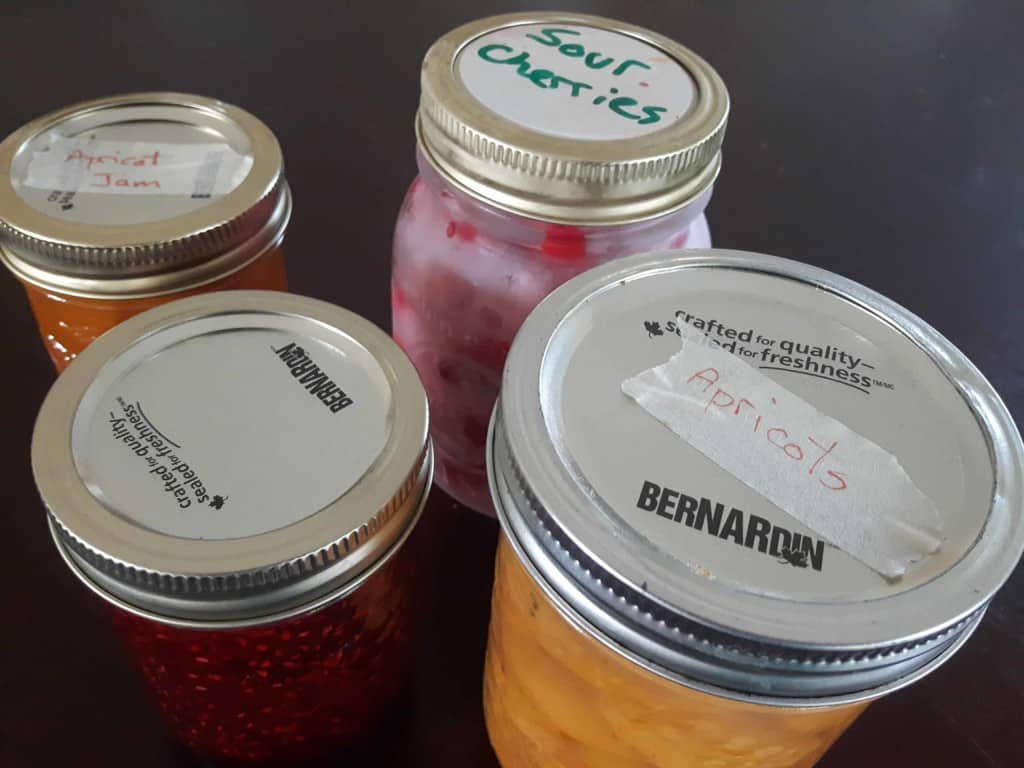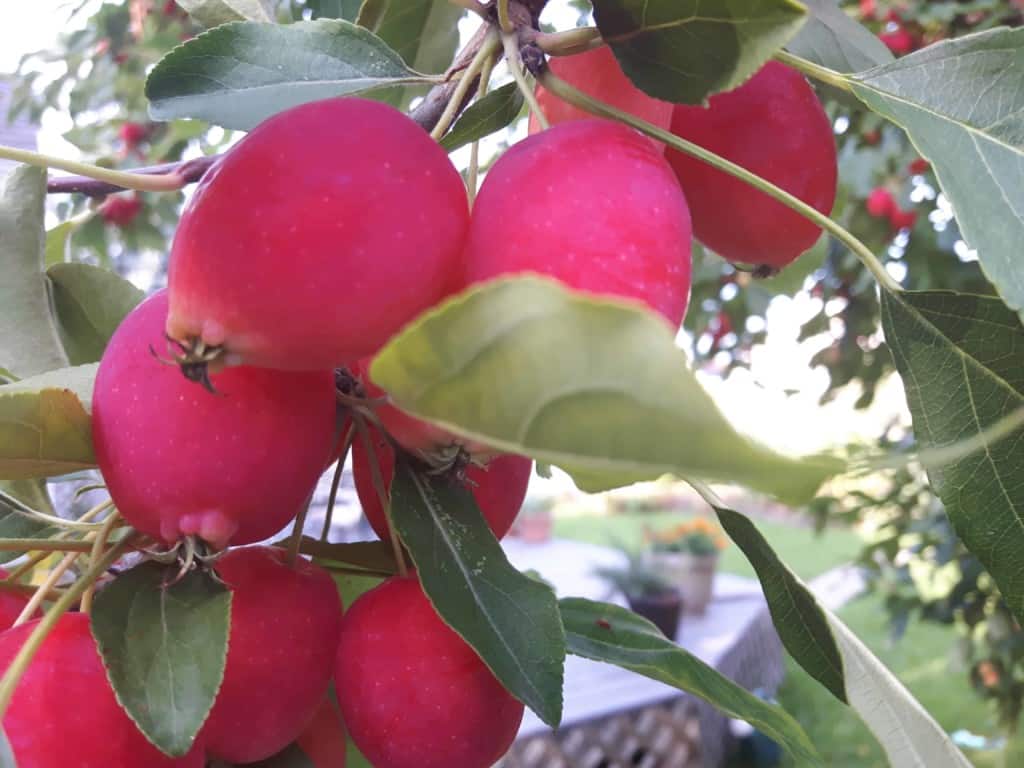The gift of rescuing each other’s fruit
As a resident of our mature neighbourhoods, I don’t have to go far to find people with more backyard fruit than they can use. I have access to raspberries, sour cherries, apples, and more. I spend the better part of August and September in a flurry of canning, juicing, freezing, and dehydrating.
There are always surprises along the way, and plenty of lessons.
Did you know we can grow apricots here? A neighbour with two giant apricot trees told me recently she expects to pick over a hundred gallons this year. I took home six full pails.
Another showed me her hardy kiwi vines growing up a trellis at the edge of her yard. The kiwis are small with edible skins, like a berry version of the larger fruit. Several hardy varieties of grape also survive and thrive here.
Sour cherries are better than sweet cherries for baking, including pie filling. Even better, the first step in many recipes is to freeze the cherries. This means that you can pit and freeze them, then leave the remaining work until later.

Cider is one of the best ways to use up a large quantity of apples or pears. The best cider comes from a mix of apple varieties, including crabapples which lend a lovely tart note. Personally, I enjoy it soft (unfermented).
Many people seem to think crabapples are useless. They’re not! Besides cider, they make lovely jams and jellies, and can be pickled whole for a sweet spicy side dish.
Wondering when to pick apples? They’re ripe when the seeds turn dark brown and glossy. Be sure to pick deadfall apples, otherwise those left to rot on the ground contribute to the apple maggot problem; the pupae overwinter in the decomposing fruit. Throw out unused apples, preferably in the garbage. Apple maggots from one tree can infest trees on neighbouring properties.

Or, donate fruit to Farm Animal Rescue and Rehoming Movement (FARMM), which accepts excess fruit, fruit pulp, and deadfall to feed to their rescue animals.
If you don’t have access to fruit trees, the City of Edmonton has a database of public fruit trees, from chokecherries to pears. Anyone can use it to find free fruit for themselves.
Perhaps the most interesting thing I’ve learned from fruit rescue is that it has amazing community-building power. I see some neighbours only at harvest time, but ripe fruit waits for no man. When we get together to harvest it, we catch up on our news as well.
I was delighted this year to introduce neighbours who had fruit and neighbours who could use fruit. In one case, the tree owner and the picker had known each other years before but lost touch, and were glad to reconnect.
Harvest season becomes fruitful in more ways than one when we share fruit. I, for one, feel fortunate to be a part of it.
FIND OR DONATE FRUIT
City of Edmonton website
data.edmonton.ca/widgets/dsgm-wamx
To arrange donations, email farrmrescue@gmail.com
Featured Image: Harvest fruit and eat it now or can it for later. | Nadine Riopel







